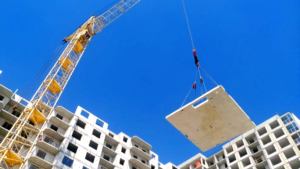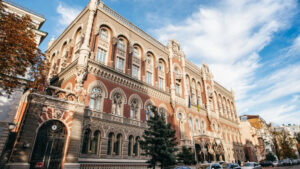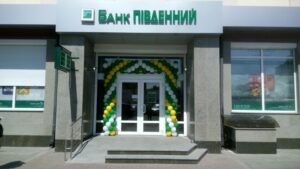
Agroholding “Agrain” has expanded the capabilities of the “Service Grain” elevator complex (Odesa region) for faster reception, storage, and shipment of grain, bringing the elevator’s capacity to 100,000 tons, the agroholding’s press service reported on Facebook.
According to the report, a 200-meter railway branch line has been laid to the elevator complex, allowing up to 30 cars to be shipped per day.
In addition, the grain reception system has been optimized: there are three nodes for unloading motor vehicles, including heavy-duty vehicles (up to 20 m), thanks to which the elevator is capable of receiving up to 1,700 tons of grain per day.
Storage capacity has been increased to 100,000 tons, for which KMZ Industries equipment has been purchased to provide aeration, cleaning, and quality control of the grain.
“Now it is possible to receive and ship both large and small batches of grain at the same time in the shortest possible time,” said specialists from the agricultural holding’s elevator complex.
Agrain is engaged in the cultivation and storage of grain and oilseeds, as well as livestock farming. Before the full-scale Russian invasion, the agricultural holding consisted of 11 agricultural enterprises. It cultivated about 110,000 hectares in the Zhytomyr, Kharkiv, Chernihiv, Odesa, and Cherkasy regions.
The owner of the holding is SAS Investcompagnie (France).

The Ukrainian Building Awards 2025, the leading national award in the field of development, architecture, and construction, will be held for the second time on December 18 at the HYATT hotel complex in Kyiv. The award, already dubbed the “Construction Oscars,” aims to identify and recognize companies, architects, and leaders whose decisions and projects are shaping the future of Ukraine.
The Ukrainian Building Awards 2025 is not just an award ceremony, but a symbol of professional recognition, reputation, and success, where each statuette carries the “weight of the year.” The event will bring together the country’s most influential developers, architects, investors, and builders under one roof for a spectacular end to the year and recognition of the leaders.
The event program covers the entire day:
The evening will be hosted by popular presenters Marichka Padalko and Nazarii Volyanskyi. Guests can look forward to a rich entertainment program: Oleksii Kogan’s jazz band will create a lively festive atmosphere, and the band S.K.A.I. will give a full concert lasting over an hour.
The organizers emphasize that this evening will be a joint festive, Christmas, and New Year’s finale for the entire industry, a place where the names of those who are creating a new Ukraine will be announced.
“The 2025 Construction Oscar is the highlight of the year for those who are creating a new Ukraine. Be among the best – your story should be heard from the stage,” the organizers note.
Registration details and tickets:
Official website: www.ubc-ua.info/uba
Contact phone number: 044 461 91 28
Organizer: DMNTR team.
About the Ukrainian Building Awards:
The Ukrainian Building Awards is a leading national professional award that annually recognizes achievements and innovations in the field of development, architecture, and construction in Ukraine. The aim of the award is to support high quality standards, identify industry leaders, and promote its development.
Interfax-Ukraine is the information partner

The National Bank of Ukraine (NBU) fined FINACO Financial Company LLC (Kyiv) UAH 1.28 million for violating the requirements of the law on the prevention and counteraction of money laundering and financial monitoring.
According to a statement on the regulator’s website, the fine is related to the improper implementation of internal documents on AML/CFT issues, shortcomings in the work of the responsible employee, failure to provide reports and documents upon request by the NBU, violation of the risk-based approach, improper verification of clients, as well as violation of the procedure for preparing reports and submitting a list of clients. A separate violation of the established procedure for notifying changes in information was noted.
Along with this, in November 2025, the NBU applied measures of influence to other market participants, including fining Pivdenny Bank UAH 18.5 million, Lviv Bank UAH 200,000, and FC ATLANA LLC UAH 595,000.
The total amount of fines for the month was UAH 20.57 million.

The National Bank of Ukraine (NBU) fined Pivdenny Bank (Odesa) a total of UAH 18.5 million for violations of legislation in the field of preventing and combating money laundering (AML/CFT) and currency legislation.
According to a statement on the regulator’s website, the bank must pay UAH 17.5 million in fines for improper application of a risk-based approach, improper verification of customers, shortcomings in enhanced verification of high-risk customers, and violation of the procedure for providing information in response to NBU requests.
Separately, Pivdenny Bank was fined UAH 1 million for violating currency supervision requirements, in particular for improper analysis of currency transaction documents and failure to identify currency transaction indicators.
In addition, the NBU issued two written warnings to the bank: for deficiencies in internal documents on AML/CFT and risk management, as well as for errors in statistical reporting on currency transactions.
As reported, in November 2025, the NBU applied sanctions to two banks and two non-bank financial institutions, including fines totaling UAH 20.57 million.

Monobank has launched a new service called Monobazar, which allows customers to sell their own items within the app, according to the bank’s co-founder Oleg Gorokhovsky.
“We are launching a beta version of monoBazar, a simple service within monoMarket where customers can sell their items. The feature is already available, and we are opening testing to everyone,” Gorokhovsky wrote on his Telegram channel on Monday.
According to him, the service has three main advantages: the ability to purchase goods in parts, verification of all sellers through the monobank system, and the creation of a personal showcase that users can share on social networks or send to friends.
The post notes that monoBazar has a number of additional features. In particular, a built-in AI model can automatically generate a detailed description of the product based on a short text provided by the user. An automated trading format has also been implemented: the buyer can offer their price, and the seller makes a decision without the need for correspondence.
According to the co-founder of monobank, the seller receives the funds only after the buyer picks up the parcel from the post office. If the buyer refuses the product, the money is automatically returned to the buyer and the product is returned to the seller.
The service is available in the monobank app in the “Market” section.
The service commission is 0.1% until January 8 during testing, after which it is planned to increase to 1.9%, with the buyer paying the additional cost of delivery.
Gorokhovsky also noted that until January 8, users can sell items for charity: in this case, the amount is transferred to the “Charter” fund, and monobank doubles the contribution.
As reported, the virtual monobank, created by Fintech Band LLC on the basis of Universal Bank, currently ranks second in the market in terms of the number of cards. According to the NBU, as of October 1, 2025, Universal Bank had issued a total of 25.45 million cards, of which almost 9.85 million were used for transactions during the month.
Currently, OLX is the largest player in the Ukrainian market of digital platforms for selling items.

The European Bank for Reconstruction and Development (EBRD) is providing a €16 million loan to Cherkasy to finance the purchase of modern trolleybuses and the modernization of the relevant infrastructure, according to a statement on the EBRD website.
The loan, fully guaranteed by the city, will be co-financed by an investment grant of up to EUR4 million from the EBRD’s Shareholders’ Special Fund and will have partial first-loss risk coverage under the EU Investment Program for Municipal Infrastructure and Industrial Resilience (UIF MIIR).
The EBRD notes that the financing will enable Cherkasyelektrotrans to expand its fleet with new low-floor trolleybuses, modernize its depot and other infrastructure, and expand and redistribute three trolleybus routes.
According to information on the Cherkasy City Council website, the project involves attracting EBRD loan funds for the purchase of trolleybuses with a range of up to 20 km.
“Cherkasy has been preparing to implement this project for almost 10 years. Due to previous debt obligations, the city was unable to obtain a loan for a long time, but after a positive conclusion from the Ministry of Finance, active work on the final decisions was carried out over two years. Currently, all key approvals have been obtained,” said Cherkasy Mayor Anatoliy Bondarenko.
Thanks to the project, Cherkasy will be able to renew up to 90% of the rolling stock of the Cherkasyelektrotrans municipal enterprise.
As reported, the rolling stock of Cherkasyelektrotrans currently includes 12-meter Bogdan trolleybuses manufactured in 2015, Belarusian BKM trolleybuses manufactured in 2012, LAZ trolleybuses manufactured in 2006 and 2008, one articulated Aviant-Kyiv trolleybus manufactured in 1997, as well as ZiU trolleybuses manufactured in the 1980s and 1990s.
Last year, local authorities announced that they wanted to purchase approximately 45 trolleybuses with EBRD loan funds. Currently, the plan is to purchase up to 44 vehicles.